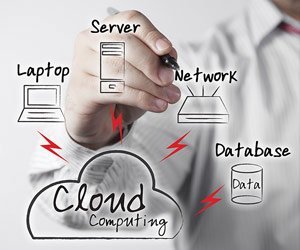Organizations struggling to reengineer their Windows applications before moving to the cloud can turn to tools designed to facilitate crucial migration processes, such as identifying dependencies and software refactoring.
These will come in handy, especially as software modernization plays an integral role in digital transformation, delivering opportunities that enterprises seek, including self-service provisioning.
Research firm IDC predicts that organizational agility, data security and productivity gains—rather than IT cost savings—will drive 80% of organizations to modernize their applications by 2025.1 In doing so, they will refactor or replace workloads with containers, which offer a standard way to package the application’s code, configuration and dependencies into one object for fast deployment. Containerization also allows businesses to bring together the infrastructure and skill sets needed to operate their applications, cutting down on infrastructure and training costs.
Containerizing applications, though, can be a complex journey requiring significant effort. To construct a container image for deployment, you will need to identify software dependencies, reconfigure network ports and establish software delivery processes, among other crucial procedures. These tasks are not only often manual and time consuming but also prone to errors.
Application refactoring can be fraught with other challenges, particularly for businesses with legacy applications. Often, the in-house developers who built the software have long left the company, leaving an existing team of engineers who may not have intimate knowledge of the application’s source codes. The result is a complicated refactoring process based on a weak knowledge base, factors that often lead to misconfigurations and software vulnerabilities.
The Top Six C-Level IT Challenges
Read this whitepaper to learn how embracing cloud database migration can help you solve key C-level IT challenges.
Download NowAutomating Based on Standardized Deployment Processes
To address these challenges, cloud vendors such as Amazon Web Services (AWS) offer tools specifically designed to help automate and streamline software modernization processes. For instance, AWS App2Container (A2C) analyzes your applications and automatically generates a container image configured with the correct dependencies, network configurations and deployment instructions for Kubernetes or AWS Elastic Container Service (ECS) platforms.
Designed as a command-line tool to modernize .NET and Java applications into containers, A2C builds an inventory of all applications running on virtual machines, Amazon Elastic Compute Cloud (EC2) instances or cloud platforms. A2C packages the artifacts and dependencies of applications that need to be containerized into container images, configures the network ports and generates the necessary deployment artifacts. Its deployment pipelines are based on AWS best practices and support container services such as AWS ECS, Amazon Elastic Kubernetes Service and AWS App Runner.
A2C also provisions the cloud infrastructure and continuous integration/continuous development pipelines needed to push the containerized applications into production. It lets you easily migrate and modernize your .NET applications to AWS as containers, standardizing the deployment on a single set of tooling for monitoring, operations and software delivery.
With A2C, you do not need to change any codes when you containerize applications to run in your data center. Enabling remote execution also allows you to automate the migration from your data center to AWS.
To further simplify the application refactoring process, you can tap AWS Microservice Extractor for .NET to quickly identify components to reengineer into smaller microservices. The AWS tool can refactor monolith codebases into smaller code projects, which your team can then develop, deploy and operate as independent services. Its visualization feature lets you easily identify and label application components to refactor according to their metrics and dependencies.
In addition, organizations with a large .NET base can turn to AWS Porting Assistant for .NET to prioritize applications based on the level of effort required. The tool scans your entire .NET framework application portfolio and generates .NET Core compatibility assessment reports, enabling rapid modernization of the applications to Linux. It identifies incompatible .NET Core APIs and helps determine known replacements, cutting the manual effort of searching for replaceable packages and APIs.
Companies that need help navigating their modernization journey with AWS can look to service providers such as Rackspace Technology, which has specialized AWS expertise and advanced operational tooling to extract more returns from the AWS cloud. Moreover, customers can tap AWS-led funding programs to accelerate their modernization journey. These funds can be used to facilitate application discovery and migration efforts.
Such efforts are facilitated by Rackspace Technology’s engineers, who together have more than 1,000 AWS technical certifications and deep insights on best practices and operational expertise to support AWS environments.
Ultimately, companies have much to gain from modernizing their applications on AWS: They can cut their payback periods to six months and slash their total cost of ownership by 64%.
1 “IDC Reveals Key Asia-Pacific IT Services Predictions for 2022 and Beyond,” IDC, Feb. 7, 2022

